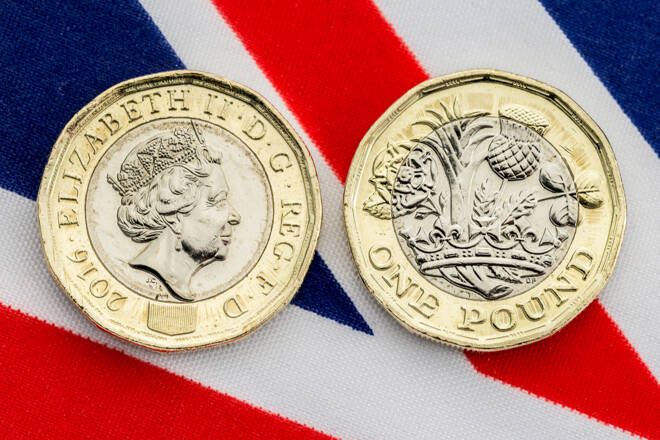Advertisement
Advertisement
GBP to USD Forecast: UK Retail Sales and BoE Insights Await
By:
As UK retail data unfolds, Pound Sterling's future collides with BoE policy and US housing sector scrutiny.
Highlights
- The GBP/USD slipped by 0.01% on Thursday, ending the session at $1.24139.
- On Friday, UK retail sales figures could determine the near-term outlook on Bank of England interest rates.
- US Fed speakers need consideration later in the day.
The Thursday GBP/USD Overview
On Thursday, the GBP/USD slipped by 0.01%. Following a 0.66% loss on Wednesday, the GBP/USD ended the day at $1.24139. The GBP/USD fell to a low of $1.23761 before rising to a high of $1.24556.
UK Retail Sales to Complete the Jigsaw Puzzle
On Friday, UK retail sales figures for October will garner investor interest. After hotter-than-expected wage growth and softer inflation numbers, retail sales will deliver the BoE further clues on demand-driven inflation.
A rebound in consumer spending could fuel demand-driven inflationary pressures and could complicate policy plans for the Bank of England. UK private consumption contributes over 60% of the economy. Higher interest rates may curb spending through increased borrowing rates but could also affect the economy.
Economists forecast UK retail and core retail sales to increase by 0.3% and 0.5%, respectively, in October.
Beyond the numbers, BoE member commentary also warrants monitoring. Sir Dave Ramsden is on the BoE calendar to speak on Friday. Comments relating to the recent UK economic indicators and interest rates need consideration.
US Housing Sector and the Fed in the Spotlight
On Friday, the US housing sector will be in focus. As a litmus test of the US economy, a deterioration in the housing market would send a red flag. Weak demand from higher borrowing costs could affect consumer confidence and disposable income.
Waning consumer confidence and a downward in disposable income would affect consumer spending. US private sector consumption contributes over 60% to the US economy.
While the statistics will draw investor attention, individuals must monitor Fed speakers. FOMC members Michael Barr, Austan Goldsbee, and Mary Daly are on the Calendar to speak. Comments on US inflation, the US economic outlook, and interest rates will influence the sentiment toward Fed interest rate intentions.
Short-Term Forecast
UK retail sales could impact GBP/USD trends. Strong wage growth and spending may extend BoE rate hikes, while weaker spending could boost BoE rate cut expectations, favoring the US dollar.
GBP to USD Price Action
Daily Chart
The GBP/USD held above the 200-day and 50-day EMAs, sending bullish price signals.
A GBP/USD break above the $1.24410 resistance level would support a return to $1.25.
UK retail sales figures and central bank speeches will be the focal points.
However, a GBP/USD drop below the 200-day EMA would give the bears a run at the 50-day EMA and sub-$1.23. Hawkish Fed commentary and a slide in UK retail sales could pressure the GBP/USD.
The 14-period daily RSI reading of 59.00 indicates a GBP/USD return to $1.25 before entering overbought territory.
4-Hourly Chart
The GBP/USD remained above the 50-day and 200-day EMAs, affirming bullish price signals.
A GBP/USD move through the $1.24410 resistance level would support a breakout from $1.25 to target the $1.26 handle.
However, a break below the 50-day EMA would bring the 200-day EMA into play.
The 14-period RSI on the 4-hour Chart at 56.27 suggests a GBP/USD return to $1.25 before entering overbought territory.
About the Author
Bob Masonauthor
With over 28 years of experience in the financial industry, Bob has worked with various global rating agencies and multinational banks. Currently he is covering currencies, commodities, alternative asset classes and global equities, focusing mostly on European and Asian markets.
Advertisement
